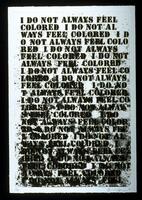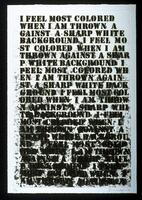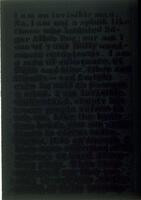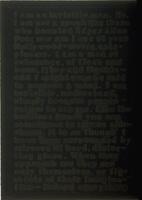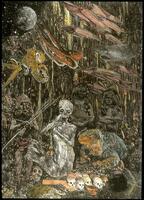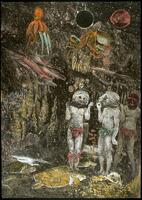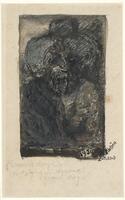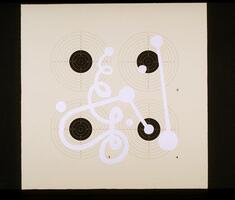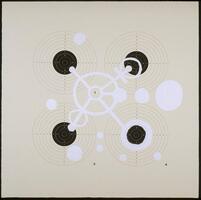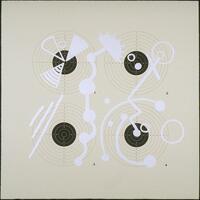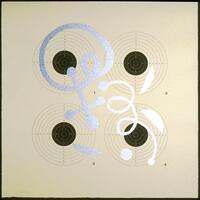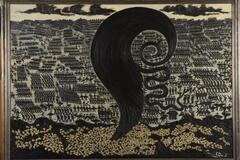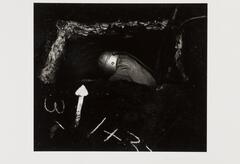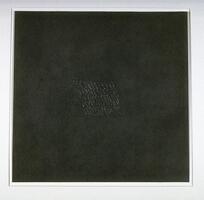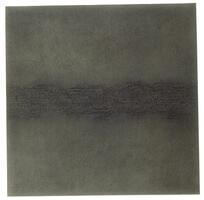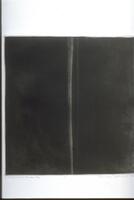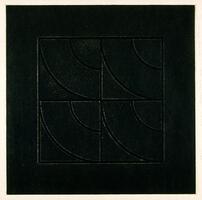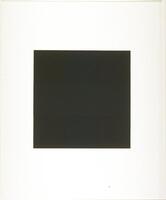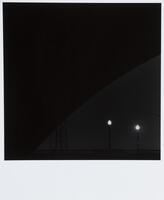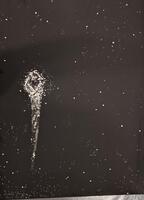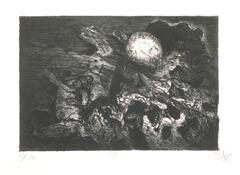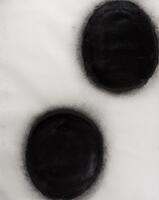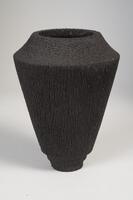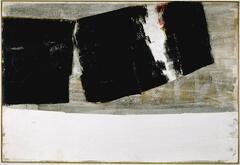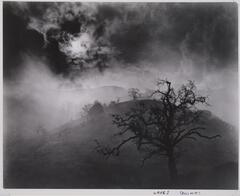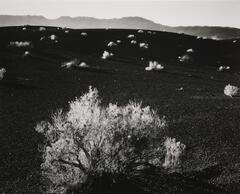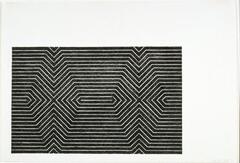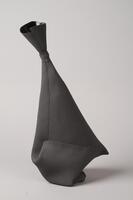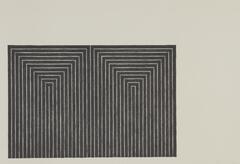35 Items in this Learning Collection
Collection Object
Collection Object
Collection Object
Collection Object
Collection Object
Collection Object
Collection Object
Collection Object
Collection Object
Collection Object
Collection Object
Collection Object
Collection Object
Collection Object
Collection Object
Collection Object
Collection Object
Collection Object
Collection Object
Collection Object
Collection Object
Collection Object
Copyright
All Rights Reserved
()
Untitled, from "Ten Works + Ten Painters"
Accession Number
1986/1.194.10
Title
Untitled, from "Ten Works + Ten Painters"
Artist(s)
Ad Reinhardt
Artist Nationality
American (North American)
Object Creation Date
1964
Medium & Support
screenprint on paper
Dimensions
24 1/16 in x 20 1/16 in (61.12 cm x 50.96 cm);32 1/8 in x 26 1/8 in (81.6 cm x 66.36 cm);24 in x 12 1/8 in (60.96 cm x 30.8 cm)
Credit Line
Gift of Graham and Marianne Smith
Label copy
Born and raised in Buffalo, New York, Ad Reinhardt moved to New York at eighteen to study art history at Columbia University. Following his studies at Columbia, Reinhardt took classes in painting at the National Academy of Design and the American Artist’s School in Greenwich Village. Unlike many of the first generation of the New York School, Reinhardt began his career as an abstract painter and was employed by the Works Progress Administration’s Federal Art Project in the early 1940s to produce non-representational work. His earliest works were geometric abstractions that evolved during the 1940s into organic, gestural compositions similar to the work of his contemporaries Willem de Kooning and Jackson Pollock. Following his work for the WPA, he worked as a commercial artist. Reinhardt devoted much of his time to political causes and was one of the more outspoken artists of the New York School demonstrating against both the Museum of Modern Art in the 1940s and the Metropolitan Museum of Art a decade later for not exhibiting contemporary art. He also produced a number of political cartoons for newspapers and magazines in the city.
This untitled silkscreen is based upon a body of similar paintings produced between 1960 and 1966. Unlike Reinhardt’s earlier works which combined a vibrant palette with a calligraphic hand, his works from the 1950s demonstrate his evolution to a simplified, monochromatic composition. The following decade he introduced the central cross image which gave his works their pure symmetry and paired it with a dark overall palette, often black, which appeared almost flat and colorless. The focus in this work, however, is the interplay between light and dark. Allowing the eye to rest upon the black space, the viewer can detect subtle tonal changes, hints within the black of warm and cool tones, a rich black composed of many colors. What is left is the pure, elegant form that, so different than the paintings of the earlier generation of painters, requires from the viewer only the act of looking.
Katie Weiss, Research Assistant, on the occasion of the exhibition The New York School: Abstract Expressionism and Beyond and Beyond, July 20, 2002 – January 19, 2003
---
Various Artists
Ten Works x Ten Painters
1964
Gift of Graham and Marianne Smith
George Ortman (born 1926)
Untitled
Screenprint on paper
1986/1.194.1
Frank Stella (born 1936)
Untitled
Screenprint on paper
1986/1.194.2
Ellsworth Kelly (born 1923)
Untitled
Screenprint on paper
1986/1.194.3
Robert Motherwell (1915–1991)
Untitled
Screenprint and collage on paper
1986/1.194.4
Andy Warhol (1928–1987)
Birmingham Race Riot
Screenprint on paper
1986/1.194.5
Stuart Davis (1894–1964)
Untitled
Screenprint on paper
1986/1.194.6
Roy Lichtenstein (1923–1997)
Sandwich and Soda
Screenprint on mylar
1986/1.194.7
Larry Poons (born 1937)
Untitled
Screenprint on paper
1986/1.194.8
Robert Indiana (born 1928)
External Hexagon
Screenprint on paper
1986/1.194.9
Ad Reinhardt (1913–1967)
Untitled
Screenprint on paper
1986/1.194.10
In the early 1960s there was a widespread printmaking revival in the United States. During this time numerous studios and workshops were established on the East and West Coasts, including Tamarind Workshop, Universal Limited Art Editions, Gemini G.E.L., and Crown Point Press. This revitalization of printmaking coincided with the rise of Pop art and Minimalism, two modern art movements that shared with printmaking an interest in modern technology, reproducibility, and mass production. Further support was generated by newly formed professional organizations and publications devoted solely to the medium and art of printmaking. Galleries and museums began to acquire, exhibit, and commission limited edition prints and print portfolios. One particularly popular strategy was to publish the work of several artists together. Ten Works x Ten Painters is one of the earliest examples of this type of portfolio and is especially notable because it was the first to be published by a museum. Samuel J. Wagstaff, the curator of paintings at the Wadsworth Atheneum in Hartford, Connecticut, who commissioned the portfolio, wanted to make work by major American artists accessible to a wider audience and range of collectors. Many of the ten prints express a Pop sensibility, either in subject or color choice, but the selection of artists was still diverse. Each of the prints was based on a painting the artists had previously created, and for Wagstaff, the unifying bond among the prints was their flatness and the ease in which the painting was translated to ink on paper.
All of the works in the portfolio—printed by Norman Ives and Sewell Sillman at Sirocco Screenprints in New Haven, Connecticut—were silkscreen prints on paper with the exception of two: the Lichtenstein, which was printed on mylar, and the Motherwell, which had additional paper collage elements. In both cases, it was the first time the artist had employed these techniques.
(6/28/10)
Primary Object Classification
Print
Primary Object Type
abstract
Collection Area
Modern and Contemporary
Rights
If you are interested in using an image for a publication, please visit http://umma.umich.edu/request-image for more information and to fill out the online Image Rights and Reproductions Request Form.
Keywords
American (North American)
Minimal
abstraction
bilateral symmetry
modern and contemporary art
square (shape)
squares
1986/1.194.10
Title
Untitled, from "Ten Works + Ten Painters"
Artist(s)
Ad Reinhardt
Artist Nationality
American (North American)
Object Creation Date
1964
Medium & Support
screenprint on paper
Dimensions
24 1/16 in x 20 1/16 in (61.12 cm x 50.96 cm);32 1/8 in x 26 1/8 in (81.6 cm x 66.36 cm);24 in x 12 1/8 in (60.96 cm x 30.8 cm)
Credit Line
Gift of Graham and Marianne Smith
Label copy
Born and raised in Buffalo, New York, Ad Reinhardt moved to New York at eighteen to study art history at Columbia University. Following his studies at Columbia, Reinhardt took classes in painting at the National Academy of Design and the American Artist’s School in Greenwich Village. Unlike many of the first generation of the New York School, Reinhardt began his career as an abstract painter and was employed by the Works Progress Administration’s Federal Art Project in the early 1940s to produce non-representational work. His earliest works were geometric abstractions that evolved during the 1940s into organic, gestural compositions similar to the work of his contemporaries Willem de Kooning and Jackson Pollock. Following his work for the WPA, he worked as a commercial artist. Reinhardt devoted much of his time to political causes and was one of the more outspoken artists of the New York School demonstrating against both the Museum of Modern Art in the 1940s and the Metropolitan Museum of Art a decade later for not exhibiting contemporary art. He also produced a number of political cartoons for newspapers and magazines in the city.
This untitled silkscreen is based upon a body of similar paintings produced between 1960 and 1966. Unlike Reinhardt’s earlier works which combined a vibrant palette with a calligraphic hand, his works from the 1950s demonstrate his evolution to a simplified, monochromatic composition. The following decade he introduced the central cross image which gave his works their pure symmetry and paired it with a dark overall palette, often black, which appeared almost flat and colorless. The focus in this work, however, is the interplay between light and dark. Allowing the eye to rest upon the black space, the viewer can detect subtle tonal changes, hints within the black of warm and cool tones, a rich black composed of many colors. What is left is the pure, elegant form that, so different than the paintings of the earlier generation of painters, requires from the viewer only the act of looking.
Katie Weiss, Research Assistant, on the occasion of the exhibition The New York School: Abstract Expressionism and Beyond and Beyond, July 20, 2002 – January 19, 2003
---
Various Artists
Ten Works x Ten Painters
1964
Gift of Graham and Marianne Smith
George Ortman (born 1926)
Untitled
Screenprint on paper
1986/1.194.1
Frank Stella (born 1936)
Untitled
Screenprint on paper
1986/1.194.2
Ellsworth Kelly (born 1923)
Untitled
Screenprint on paper
1986/1.194.3
Robert Motherwell (1915–1991)
Untitled
Screenprint and collage on paper
1986/1.194.4
Andy Warhol (1928–1987)
Birmingham Race Riot
Screenprint on paper
1986/1.194.5
Stuart Davis (1894–1964)
Untitled
Screenprint on paper
1986/1.194.6
Roy Lichtenstein (1923–1997)
Sandwich and Soda
Screenprint on mylar
1986/1.194.7
Larry Poons (born 1937)
Untitled
Screenprint on paper
1986/1.194.8
Robert Indiana (born 1928)
External Hexagon
Screenprint on paper
1986/1.194.9
Ad Reinhardt (1913–1967)
Untitled
Screenprint on paper
1986/1.194.10
In the early 1960s there was a widespread printmaking revival in the United States. During this time numerous studios and workshops were established on the East and West Coasts, including Tamarind Workshop, Universal Limited Art Editions, Gemini G.E.L., and Crown Point Press. This revitalization of printmaking coincided with the rise of Pop art and Minimalism, two modern art movements that shared with printmaking an interest in modern technology, reproducibility, and mass production. Further support was generated by newly formed professional organizations and publications devoted solely to the medium and art of printmaking. Galleries and museums began to acquire, exhibit, and commission limited edition prints and print portfolios. One particularly popular strategy was to publish the work of several artists together. Ten Works x Ten Painters is one of the earliest examples of this type of portfolio and is especially notable because it was the first to be published by a museum. Samuel J. Wagstaff, the curator of paintings at the Wadsworth Atheneum in Hartford, Connecticut, who commissioned the portfolio, wanted to make work by major American artists accessible to a wider audience and range of collectors. Many of the ten prints express a Pop sensibility, either in subject or color choice, but the selection of artists was still diverse. Each of the prints was based on a painting the artists had previously created, and for Wagstaff, the unifying bond among the prints was their flatness and the ease in which the painting was translated to ink on paper.
All of the works in the portfolio—printed by Norman Ives and Sewell Sillman at Sirocco Screenprints in New Haven, Connecticut—were silkscreen prints on paper with the exception of two: the Lichtenstein, which was printed on mylar, and the Motherwell, which had additional paper collage elements. In both cases, it was the first time the artist had employed these techniques.
(6/28/10)
Primary Object Classification
Primary Object Type
abstract
Collection Area
Modern and Contemporary
Rights
If you are interested in using an image for a publication, please visit http://umma.umich.edu/request-image for more information and to fill out the online Image Rights and Reproductions Request Form.
Keywords
American (North American)
Minimal
abstraction
bilateral symmetry
modern and contemporary art
square (shape)
squares

